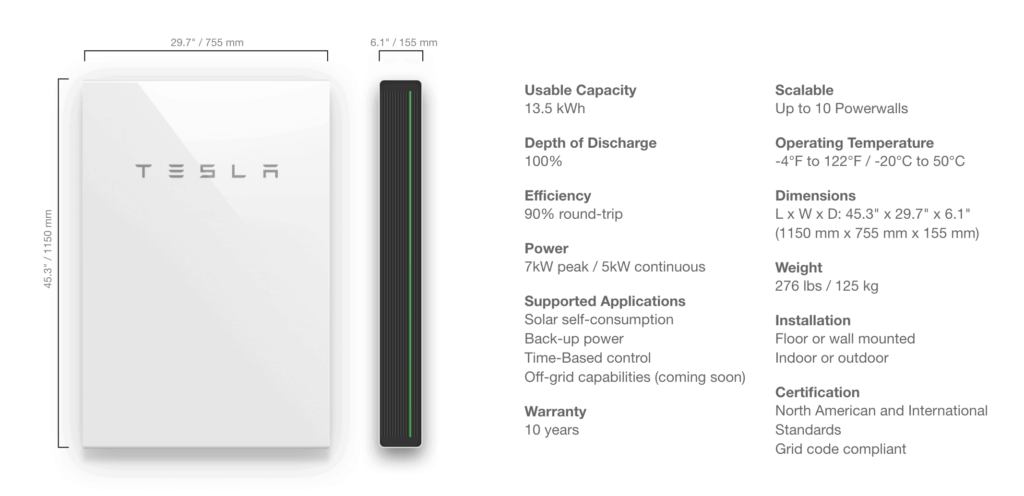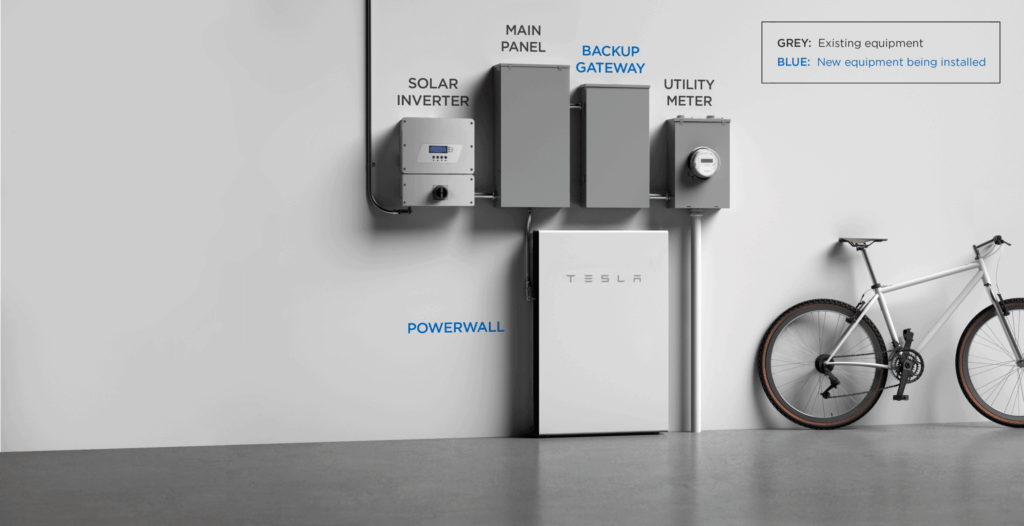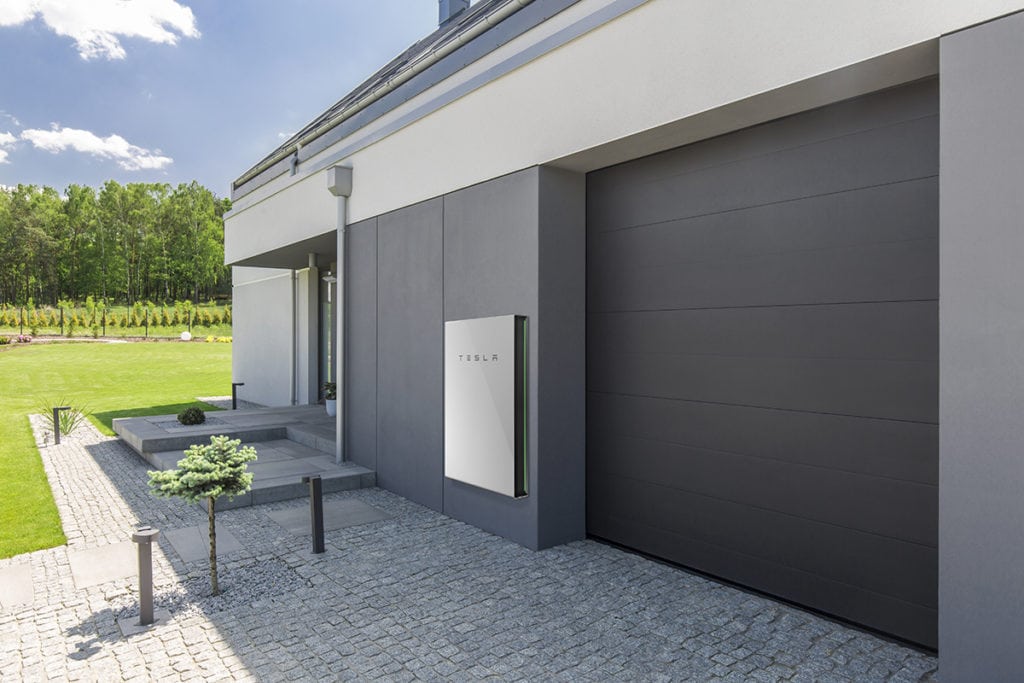News reports of PG&E shutting off power for emergency purposes has created a lot of interest in battery backup products. Many of our current and new clients have asked us if Tesla Powerwall would be the right fit for them. So let’s take a look at the Powerwall and answer some questions so you can make an informed decision.
What is Tesla Powerwall?
Tesla Powerwall is a DC Battery system with a usable capacity of 13.5 kilowatt-hours. The Powerwall can output power at a 7kW peak or 5kW continuous rate. The Powerwall has a built-in inverter that converts your stored DC power into AC power so it can easily be connected to your home.
When it comes time to charge, the Powerwall inverter turns AC power back into DC power for storage in the battery. The inverter has a round trip efficiency of 90%. That means that 10% of the power sent into the Powerwall to be stored is lost through inefficiencies of converting the energy from AC to DC.
Technical details aside, Tesla Powerwall is a home battery that stores solar energy so you can use it on demand and self-power your home to reduce your reliance on grid electricity. In the event of a grid outage, Powerwall automatically provides backup power and easily integrates with solar to ensure your home is powered 24/7. With Powerwall, you are assured of energy security and a clean energy lifestyle.
How Much Energy Does Tesla Powerwall Store?
Tesla Powerwall has a usable capacity of 13.5 kWh. The capacity the Powerwall is measured in terms of usable capacity, which is the total amount of energy stored in the battery that can actually be pulled back out and used by the attached home or business. It features a 100% depth of discharge, meaning that the entire 13.5 kWh of usable capacity can be pulled out if needed.

Tesla Powerwall Operating Modes
Tesla Powerwall is designed for flexible operations and over-the-air updates that can push new functionality down to the Powerwall. The internet connectivity of the Powerwall Backup Gateway allows the Powerwall to stay connected to the internet to keep tabs on changing electricity prices, energy policies, and even the weather. This data is rolled together into a package that is continually working to optimize the energy footprint of the home using a handful of optimization features.

Self-Powered Mode
Tesla Powerwall can maximize the self-consumption of an onsite solar energy system. Power is maximized by storing up power during the day and using that stored power as needed to power the home. The ability to store solar power generation and use it back from the Powerwall battery at night increases the amount of solar energy that directly powers your home.
Backup Mode
As a residential battery, one of the primary functions of the Powerwall is to provide backup power in the event of a utility power outage. In the event that the outage lasts for an extended period, Powerwall can actually recharge itself from a rooftop solar power system. While your neighbors might be without power for hours, days, or even weeks, a solar-connected Powerwall system can effectively keep your home powered indefinitely, within the constraints of the size of the solar system and the number of Powerwalls installed, of course.
Advanced Time-Based Control
Powerwall is connected to the internet and has brains to match, which work together to optimize the cost of energy for customers with electricity rates that vary depending on the time of day or the season. With Advanced Time-Based Control, Powerwall actively works to maximize the value of the solar generation and the energy usage of the home from the grid to intelligently charge and discharge based on the time and price of energy.
Tesla Powerwall Installation
Tesla’s Powerwall can be installed as a ground-mount installation or mounted to a wall, depending on what’s best for the location where it’s being installed. The Powerwall is also water-resistant and dust proof, making outdoor installations an option in most situations.

Powerwall and Backup Gateway units are rated for installation indoors or outdoors, and can operate within a wide range of temperatures, from -20°C to 50°C (-4°F to 122°F), though the optimum temperatures for Powerwall operation are between 0°C and 30°C (32°F to 86°F).
Is A Telsa Powerwall Right For You?

The good news about a Tesla Powerwall is that if you have an existing solar installation, there is a good chance you can install a Powerwall as a retrofit. For new installations, you can plan and prepare your Powerwall installation and get everything done at once.
One way or another, installing a Tesla Powerwall can greatly increase the effectiveness and value of a solar energy system, save you more money, and keep the juice flowing when the grid is down.
A.M. Sun Solar is a certified Tesla Powerwall installer, and we would be happy to meet with you for a free in-home consultation. Just give us a call at 805-772-6786 or fill out this form to request a consultation:


